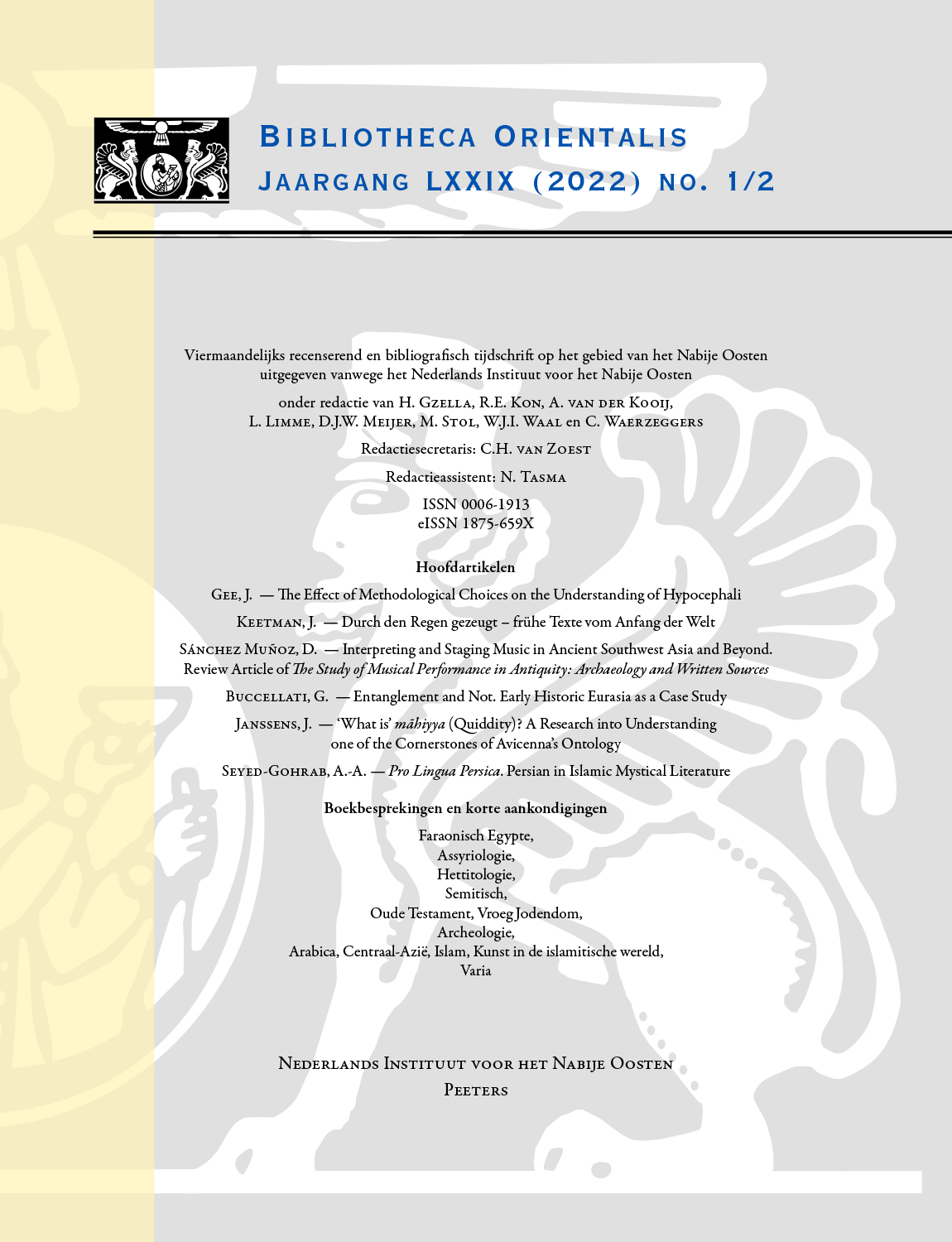 previous article in this issue previous article in this issue | next article in this issue  |

Preview first page |
Document Details : Title: From the Armory of Narrative Art Subtitle: The Intertextuality of Mythological Epics in Ancient Mesopotamia Author(s): BACH, Johannes Journal: Bibliotheca Orientalis Volume: 78 Issue: 1-2 Date: 2021 Pages: 24-38 DOI: 10.2143/BIOR.78.1.3289837 Abstract : Although intertextuality is a hallmark of Ancient Near Eastern literary research since many decades, the concept has been neither consistently addressed nor theoretically and pragmatically formalized in Assyriological research until very recently. One of the key works on this matter appeared in the beginning of 2020, when Selena Wisnom (Oxford) published the revised version of her doctoral thesis as a monograph entitled Weapons of Words. Her study is devoted to the intertextual connections between Anzû, Enūma eliš, and Erra and Išum, three major Akkadian mythological epics that are fundamental for accessing Mesopotamian religion and cosmology. Wisnom’s book significantly improves our understanding of the texts by showing as meticulously as elegantly how these works, one after another, adapt, re-actualize, and transform the contents of their mythological predecessors. Wisnom’s approach is mainly concerned with the advancement of interpretations, and consequentially intertextual methodology and reading strategies are applied as tools in the classical hermeneutical sense. Nonetheless she also pays attention to structuralist matters, of which especially the book’s final chapter gives excellent testimony. This review article addresses issues and questions arising from Wisnom’s approach in a complimentary manner, yet from a structuralist viewpoint that is more concerned with intertextual theory and the context of the discussed epics’ production. Most of the critical discussion which forms the first part of this essay focusses on Wisnom’s methodology and theoretical coverage. In the second part a few selected examples of Wisnom’s interpretations are discussed in detail, offering both affirmation as well as alternatives. |
|


